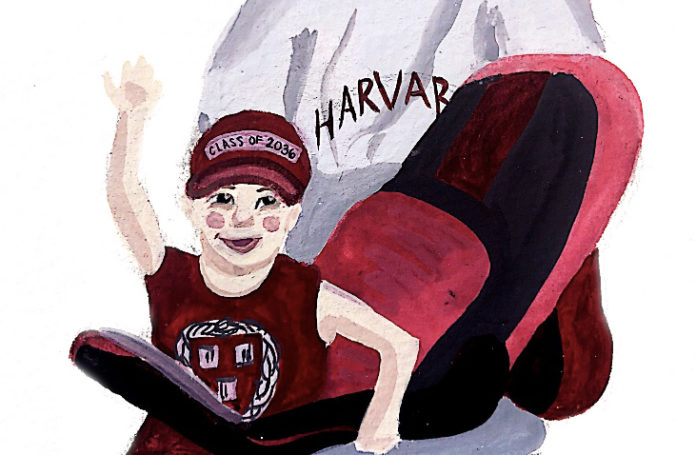Last month, a federal judge ruled that Harvard University does not discriminate against Asian American applicants. The plaintiff, a nonprofit called Students for Fair Admissions (SFFA), alleged that Harvard held Asian Americans to a higher standard than other students during its admissions process, disproportionately hurting their chances of acceptance.
While this ruling appears to be an example of Asian American discrimination, it is a win for all Americans committed to racial justice. SFFA’s pattern of legal attacks reveals this case is part of a wider scheme to defeat affirmative action, the practice of race-conscious admissions meant to increase enrollment of black and Latinx students.
SFFA claims its mission is to “restore the original principles of our nation’s civil rights movement.” However, its president Edward Blum — a white, conservative legal strategist— has a history of attacking affirmative action, voting rights and civil rights causes. In 2008, Blum orchestrated a challenge to race-based admission in higher education, helping a white woman sue the University of Texas for rejecting her because of her race.
In response to the ruling, Blum said he “needed Asian plaintiffs” to continue his crusade against affirmative action. He knew that it would be harder to condemn an attack on affirmative action if it came from a minority group. Blum recruited Asian plaintiffs, making calls and publishing online advertisements that read “Were you denied admission to Harvard? It may be because you’re the wrong race.” Posing as a champion of equality, Blum was orchestrating a complicated racial chess game, using Asian Americans as a pawn to advance an anti-black agenda.
This strategy echoes a broader historical pattern where white America pits minorities against each other, forcing them to compete over the few opportunities they are allotted. The resulting narrative frames affirmative action as a zero-sum game where black and Latinx students can only win if Asian students lose.
I’ll admit that affirmative action is far from perfect: black and Latinx students are still underrepresented in higher education, and white women have gained the most in employment and education since its implementation. However, states that have banned affirmative action have seen a significant decrease in black and Latinx student enrollment. A 2016 survey found that ending affirmative action would primarily help white students, raising Asian American admissions chances by only 1 percent.
If we want equity in higher education, we need to shift our criticism from affirmative action to the most corrupt aspect of admissions: the advantage given to children of alumni, or legacies. SFFA’s lawsuit revealed that Harvard allocates 30 percent of its incoming class each year for athletes, legacies, applicants on the dean’s interest list (typically children of donors or celebrities) and children of faculty and staff (ALDCs). Legacy admission is practiced at almost half of American private institutions — including Occidental — and legacies alone make up 14 percent of Harvard’s undergraduates.
Legacy admissions are inherently unjust, perpetuating elitism that only widens the opportunity gap for students of color in America. American colleges were only racially integrated in the 1960s and 1970s, so most current college alumni are white. As a result, legacy admission favors white students because their relatives were historically admitted to college and wealthy enough to afford tuition. Due to institutional barriers, lack of educational opportunities, racism on college campuses and socioeconomic oppression, people of color have been historically excluded from elite universities, making their children much less likely to be ALDCs.
ALDCs aren’t just given a small advantage over other Harvard applicants: 45 percent of all ALDC applicants are admitted to Harvard, compared with 5 percent of general applicants. ALDCs are nine times more likely to get into Harvard than other applicants. As an ALDC, you have a better chance of getting into Harvard than you do of getting into Occidental. ALDC statistics have been treated as a footnote in the Harvard lawsuit, but they reveal the case’s biggest takeaway. Despite affirmative action efforts to increase minority enrollment, white students are still the winners of college admissions.
Both affirmative action and legacy admissions advantage students based on their race. But by conflating the two, we overlook the difference in their purposes and effects. Affirmative action intends to rectify educational discrimination and has increased enrollment of black and Latinx students in higher education. Legacy admission, by contrast, intends to please wealthy donors and has only pushed white students further ahead of other applicants. Affirmative action aims for racial equity, while legacy admissions exacerbate racial inequity.
Affirmative action can’t be our enemy in the fight for fair admissions. Instead, we need to see it for what it is: an imperfect but necessary mechanism for correcting decades of discrimination that have barred black and Latinx students from equal opportunities in education. As Asian Americans, we need to cultivate solidarity with other communities of color, uplifting those who are disadvantaged by the education system. We need to condemn schools who not only practice legacy admission but openly celebrate it — for example, Occidental hosted a “Legacy Families Luncheon” as part of homecoming weekend this year.
Asian Americans could make the easy choice and blame affirmative action for our rejection from elitist institutions like Harvard. It’s what Blum wants us to do. But we’re better than that.
Jaya Duckworth is an undeclared first year. She can be reached at jduckworth@oxy.edu.
![]()



































